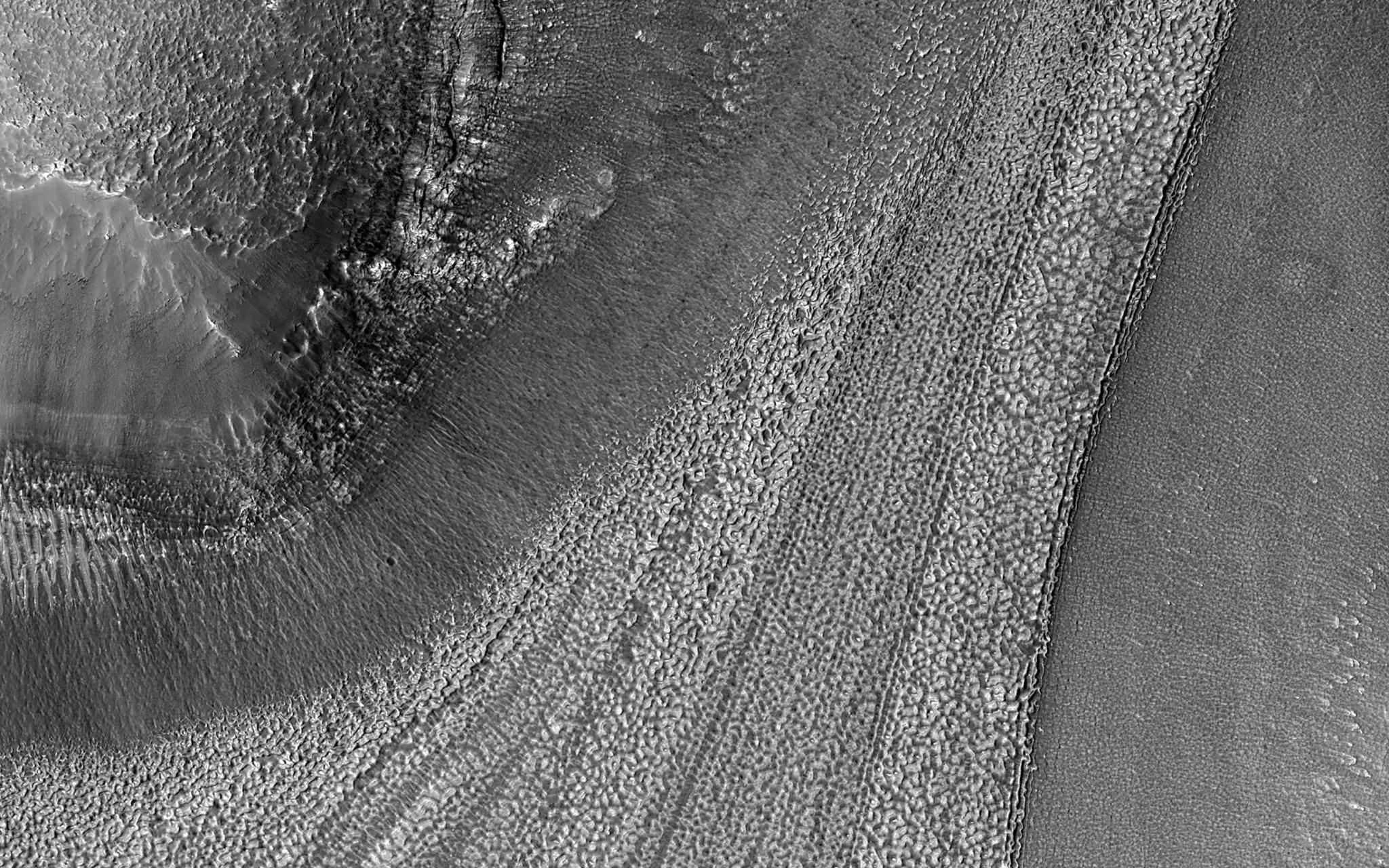
On Aug. 18, 2023, the Mars Reconnaissance Orbiter (MRO) captured ridged lines carved onto Mars’ landscape by the gradual movement of ice. While surface ice deposits are mostly limited to Mars’ polar caps, these patterns appear in many non-polar Martian regions.
As ice flows downhill, rock and soil are plucked from the surrounding landscape and ferried along the flowing ice surface and within the icy subsurface. While this process takes perhaps thousands of years or longer, it creates a network of linear patterns that reveal the history of ice flow.
The MRO has been studying Mars since 2006. Its instruments zoom in for extreme close-up photography of the Martian surface, analyze minerals, look for subsurface water, trace how much dust and water are distributed in the atmosphere, and monitor daily global weather. These studies are identifying deposits of minerals that may have formed in water over long periods of time, looking for evidence of shorelines of ancient seas and lakes, and analyzing deposits placed in layers over time by flowing water.
Image Credit: NASA/JPL-Caltech/University of Arizona
from NASA https://ift.tt/xZTazni


No comments:
Post a Comment